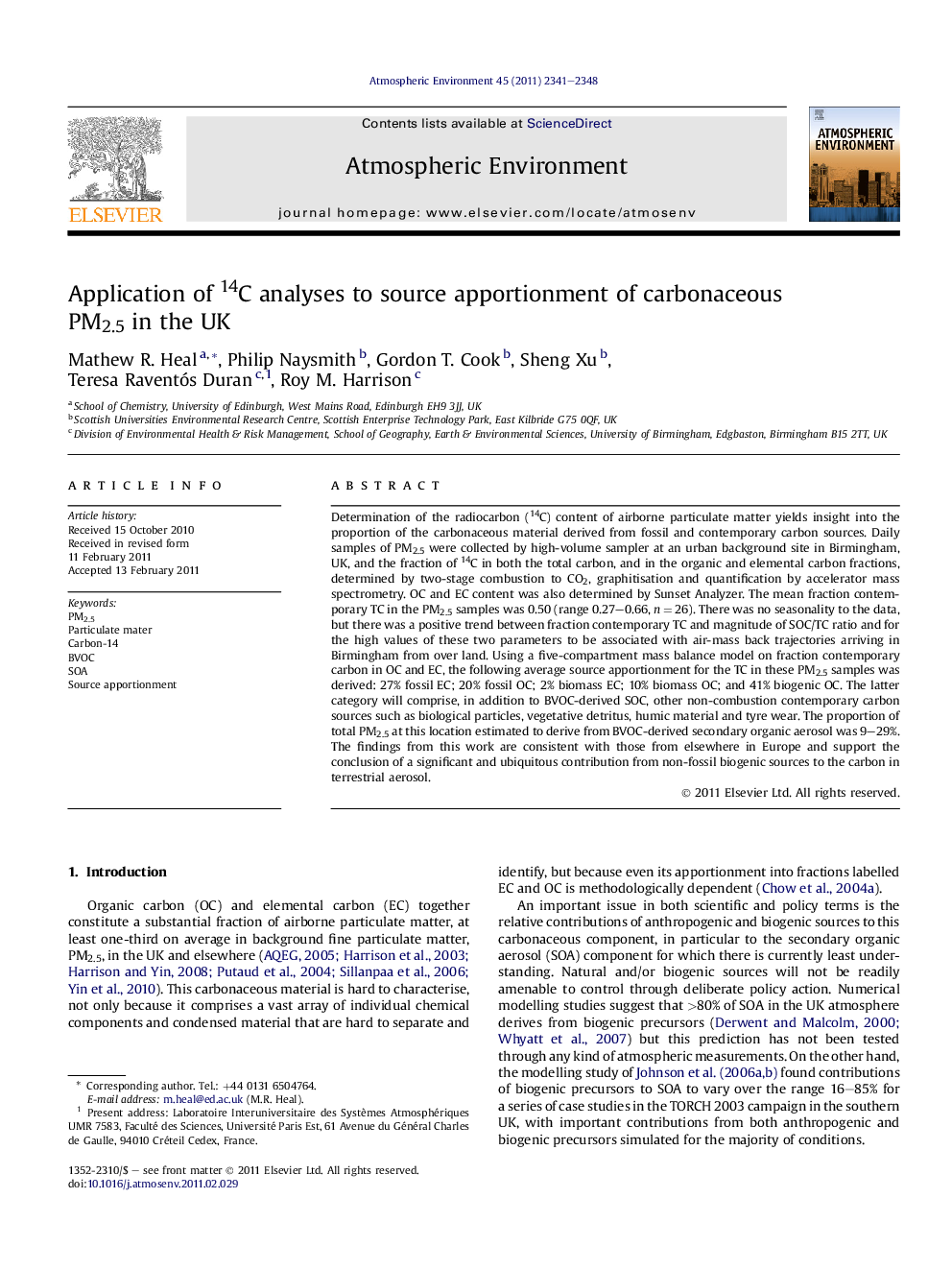| کد مقاله | کد نشریه | سال انتشار | مقاله انگلیسی | نسخه تمام متن |
|---|---|---|---|---|
| 4439727 | 1311031 | 2011 | 8 صفحه PDF | دانلود رایگان |

Determination of the radiocarbon (14C) content of airborne particulate matter yields insight into the proportion of the carbonaceous material derived from fossil and contemporary carbon sources. Daily samples of PM2.5 were collected by high-volume sampler at an urban background site in Birmingham, UK, and the fraction of 14C in both the total carbon, and in the organic and elemental carbon fractions, determined by two-stage combustion to CO2, graphitisation and quantification by accelerator mass spectrometry. OC and EC content was also determined by Sunset Analyzer. The mean fraction contemporary TC in the PM2.5 samples was 0.50 (range 0.27–0.66, n = 26). There was no seasonality to the data, but there was a positive trend between fraction contemporary TC and magnitude of SOC/TC ratio and for the high values of these two parameters to be associated with air-mass back trajectories arriving in Birmingham from over land. Using a five-compartment mass balance model on fraction contemporary carbon in OC and EC, the following average source apportionment for the TC in these PM2.5 samples was derived: 27% fossil EC; 20% fossil OC; 2% biomass EC; 10% biomass OC; and 41% biogenic OC. The latter category will comprise, in addition to BVOC-derived SOC, other non-combustion contemporary carbon sources such as biological particles, vegetative detritus, humic material and tyre wear. The proportion of total PM2.5 at this location estimated to derive from BVOC-derived secondary organic aerosol was 9–29%. The findings from this work are consistent with those from elsewhere in Europe and support the conclusion of a significant and ubiquitous contribution from non-fossil biogenic sources to the carbon in terrestrial aerosol.
► Carbon-14 used to apportion fossil and contemporary carbon in samples of PM2.5.
► Mean fraction contemporary total carbon in 26 samples ∼0.50 (range 0.27–0.66).
► Overall: 27% fossil EC; 20% fossil OC; 2% biomass EC; 10% biomass OC; 41% biogenic OC.
► Ubiquitous contribution from non-fossil sources to the carbon in terrestrial aerosol.
► Biogenic SOA contribution exceeds fossil SOA.
Journal: Atmospheric Environment - Volume 45, Issue 14, May 2011, Pages 2341–2348